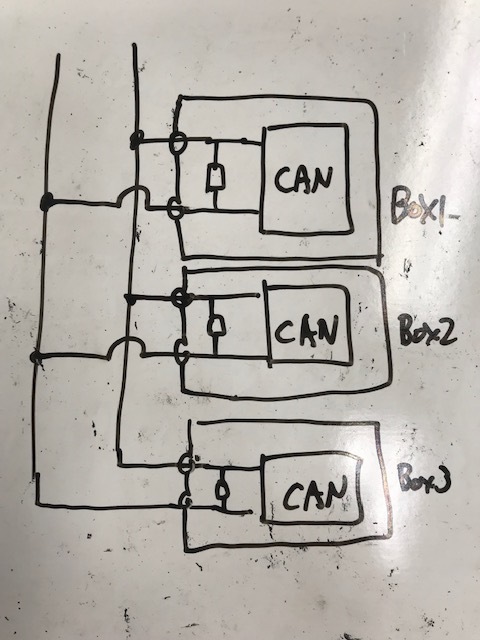Hi Experts,
In my understanding, the termination register for CAN bus should be placed at the each edges of CAN network. So if each nodes have the termination register inside the box as below, it should be problem. Is this understanding correct?
If this usage model is the problem, do you have any solution?
Regards,
Hisao Uchikoshi


